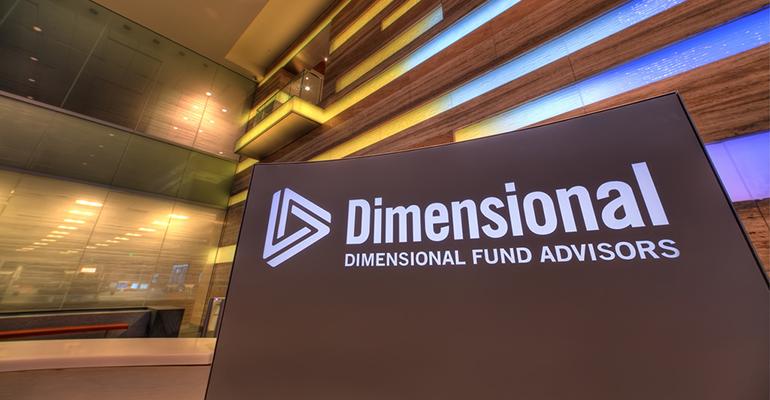(Bloomberg) -- Dimensional Fund Advisors, which manages about $637 billion, was one of the first firms to take seminal academic financial research off of the campus and put it to work in the real-world art of managing money.
So how does a head-in-the-books fund manager like that respond now that retail day traders are often in the driver’s seat and the market action sometimes feels more like a frat party than a lecture hall?
Wes Crill, the head of strategists at Dimensional, joined this week’s “What Goes Up” podcast to talk about the firm’s daily process for implementing its strategies. He also discusses a variety of other market topics, such as the rotation back into growth from value and identifying short-term factors that drive returns.
Below are some lightly edited highlights of the conversation, and the full podcast is available on Apple, Spotify or wherever you listen.
Q. I’m curious how your approach fits in with a year like this, being anchored in the academic approach. And all of a sudden, all the discount brokerages just completely get rid of commissions and we have this phenomenon with the Reddit stocks just going absolutely nuts. Does it change your approach at all?
A. It reinforces the need for flexibility within your investment approach and having a daily process. What we do know is that when prices are higher, expected returns are lower. So where that’s relevant is if you have a strategy, like say one that’s focused on small-cap value stocks, well if you have a company that started off as a small-cap value, and all of a sudden its price is now making it one of the largest 200 or 300 companies in the U.S., well then at that point it’s not really fitting the definition of higher expected returns in accordance with a small-cap value portfolio.
So if I have a daily process, then I can make the determination to sell that out of the portfolio at that time. So we can reflect changes in market prices throughout the year and rebalance our portfolios incrementally ... So you’re not beholden to one individual trade. And that way you can dynamically react to the way prices change to continuously pursue higher expected returns and manage risk.
Q. Can you tell us a little bit about what types of things your clients and people you’ve been having conversations with recently have been asking you about, what’s been on their minds?
A. I would say the foremost conversation topic for us, and this has been the case really for years, is the performance of small-cap value versus large-cap growth. What’s been interesting is you’ve sort of seen a seesaw in terms of the sentiment behind those questions for a while. It was, small-cap value underperforming large growth and concerns around that. And then when you had small-cap value come roaring back and people would start to ask, “well, how much longer can this last?” And then now you see, at least in this past quarter, small value has been underperforming large growth again.
It reinforces a couple of different, really important things for investors to keep in mind. The first is just the uncertainty around these premiums. The premise behind small-cap value stocks having higher expected returns in the market is a very simple one. It’s the idea that you’re paying less for a stream of future income... but we also know that stock returns are volatile and these premiums can be negative for sustained periods of time, but they can also show up in really large magnitude, really quickly. The return difference between small value and large growth in the U.S. as of March 31, over the trailing six-month period, was 62 percentage points. That’s one of the largest return deltas over such a short period of time ever, but it’s not uncommon for these premiums to show up in a hurry.
Q. When it comes to some of those factors, does it feel like all of the good ones have already been discovered and exploited and repackaged? Or is there something else out there that you are finding really exciting?
A. Well, I think that’s certainly a challenge, especially let’s say you’re a finance student these days compared to one 30 years ago, to find something that hasn’t already been discovered. There’s certainly the incentive to try and look for something that’s new. But I think that just because some of these core kind of asset-allocation-determining building blocks, like size, value or profitability, even if you can’t add onto those necessarily, there’s a lot of other inputs into a strategy that need to be taken into account. And that’s where some of the really exciting research has been done, internally with our research team, where we look at things, where you find shorter-term drivers of expected returns that are really trade-offs that you have to balance against things like size, value or profitability.
If you think about a value strategy, how do stocks often become value stocks? Well, it’s following a period of relative underperformance versus their peers. What do we know from the phenomenon of momentum within the cross-section of stocks? Well, stocks that have had relatively poor returns in previous periods tend to continue to have relatively poor returns in the short run. And so additional sources of information about expected returns like that are really crucial to, again, even for these well-established factors like size, value and profitability, making sure that we capture our fair share of those.
Click here to listen to the full podcast.





